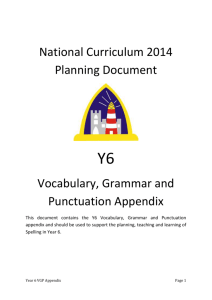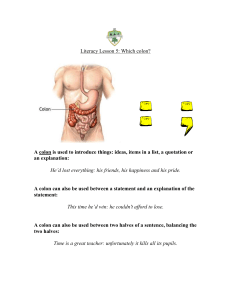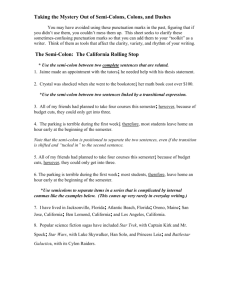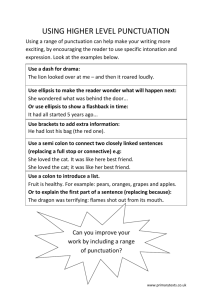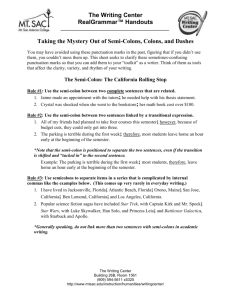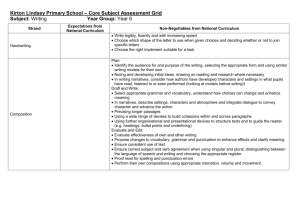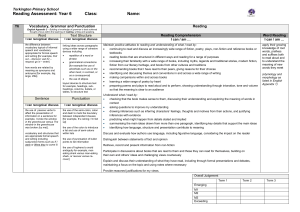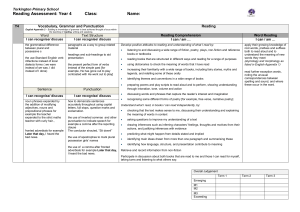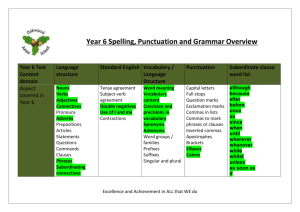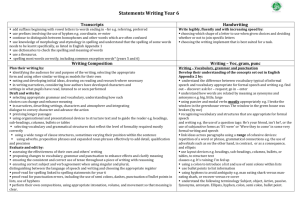Progression Guidance: Grammatical Knowledge through the
advertisement
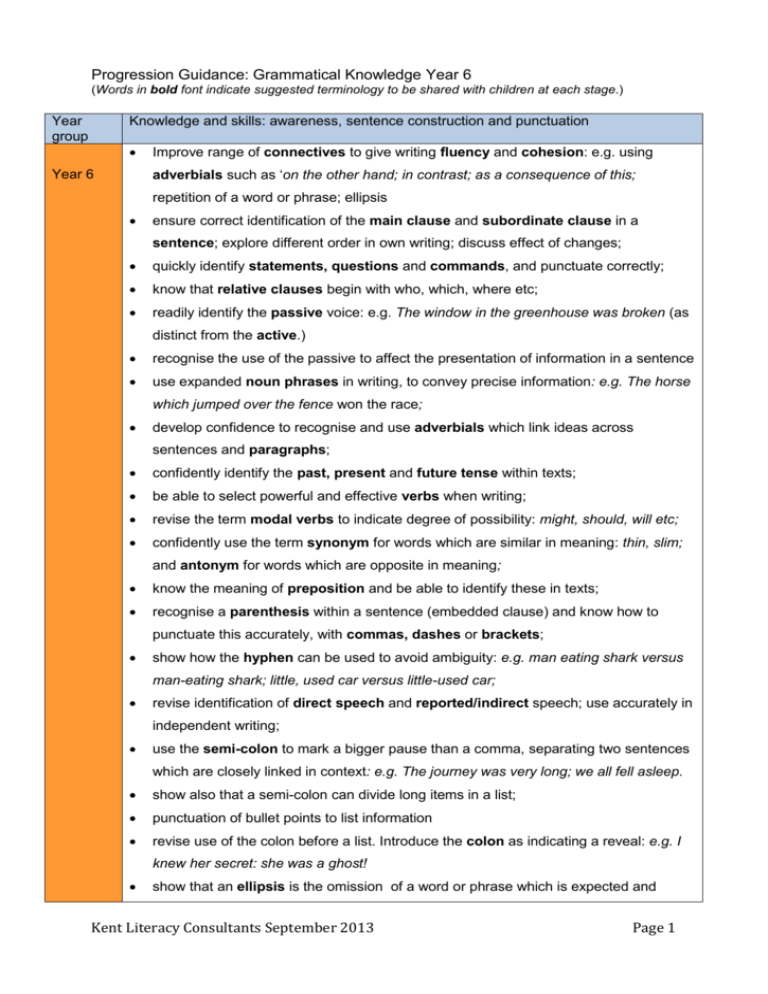
Progression Guidance: Grammatical Knowledge Year 6 (Words in bold font indicate suggested terminology to be shared with children at each stage.) Year group Knowledge and skills: awareness, sentence construction and punctuation Improve range of connectives to give writing fluency and cohesion: e.g. using adverbials such as ‘on the other hand; in contrast; as a consequence of this; Year 6 repetition of a word or phrase; ellipsis ensure correct identification of the main clause and subordinate clause in a sentence; explore different order in own writing; discuss effect of changes; quickly identify statements, questions and commands, and punctuate correctly; know that relative clauses begin with who, which, where etc; readily identify the passive voice: e.g. The window in the greenhouse was broken (as distinct from the active.) recognise the use of the passive to affect the presentation of information in a sentence use expanded noun phrases in writing, to convey precise information: e.g. The horse which jumped over the fence won the race; develop confidence to recognise and use adverbials which link ideas across sentences and paragraphs; confidently identify the past, present and future tense within texts; be able to select powerful and effective verbs when writing; revise the term modal verbs to indicate degree of possibility: might, should, will etc; confidently use the term synonym for words which are similar in meaning: thin, slim; and antonym for words which are opposite in meaning; know the meaning of preposition and be able to identify these in texts; recognise a parenthesis within a sentence (embedded clause) and know how to punctuate this accurately, with commas, dashes or brackets; show how the hyphen can be used to avoid ambiguity: e.g. man eating shark versus man-eating shark; little, used car versus little-used car; revise identification of direct speech and reported/indirect speech; use accurately in independent writing; use the semi-colon to mark a bigger pause than a comma, separating two sentences which are closely linked in context: e.g. The journey was very long; we all fell asleep. show also that a semi-colon can divide long items in a list; punctuation of bullet points to list information revise use of the colon before a list. Introduce the colon as indicating a reveal: e.g. I knew her secret: she was a ghost! show that an ellipsis is the omission of a word or phrase which is expected and Kent Literacy Consultants September 2013 Page 1 predictable, e.g. Jack waved to Kelly and (he) watched her walk away. use a dictionary and thesaurus with confidence to define new words and to support the collection of a wide variety of words to support writing; be able to identify formal and informal styles and the differences between structures (for example, the use of question tags; He’s your friend, isn’t he?, or the use of subjunctive forms such as If I were or Were they to come in some very formal writing and speech); begin to be able to use formal Standard English; achieve competence in subject/verb agreement, both in speech and in writing e.g. we were; they were; I did; Terminology for pupils: subject, object, active, passive, synonym, antonym, ellipsis, hyphen, colon, semi-colon, bullet points Kent Literacy Consultants September 2013 Page 2
